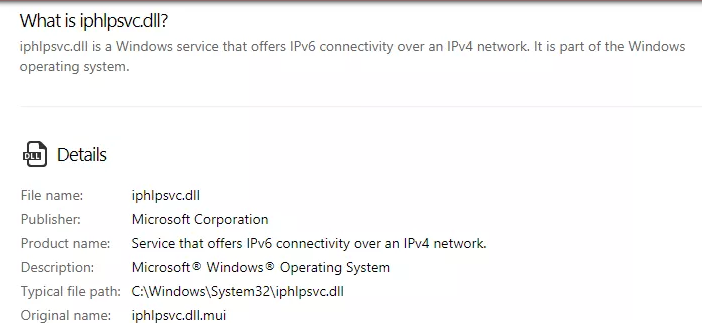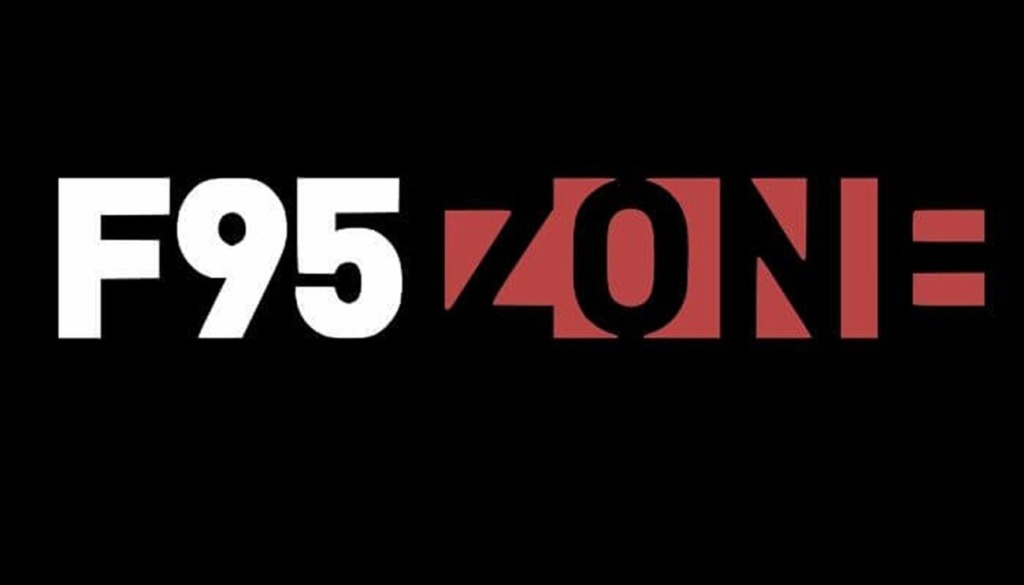Business
What is a Brand Image? Guide to Creating a Trustworthy Brand

Are you asking, “What is a brand image?” and wondering how to create one? Read this article to learn how to create a trustworthy brand.
So what is a brand image and how does this tie into branding as a whole?
Most people describe a brand as a logo or company name but these things are only a part of what a brand really is (or should be).
Coke spends an average of $3.96 billion on branding each year, which tells us two things:
- Branding is more than a company name and logo
- Brading is extremely valuable to big businesses
This guide will explain exactly what brand image is and how to create your own for your business.
What is a Brand Image?
The best place to start is to stop thinking of a brand as a static image and instead think of it as a person. How do you create a holistic branding personality that will eventually meet your business’s needs?
The kind of personality your brand has depends on the following things.
Who your Audience is

There is a standard process for defining who your audience is that leads to everything else about your brand.
- What need does your product or service fill?
- Who has this need that you can fill?
- Where are they? Online and offline.
- How can you reach them?
- What else do you know about them?
Until you really understand who your ideal customers are it isn’t a good idea to start creating a brand identity. This is because every element of your brand is going to be based on who your customers are, what they need, and what makes their life easier.
The purpose of branding is to position your business as the answer to these things, so take the time to figure this out before you move forward.
Creating a Unique Value Proposition
Another thing to consider is what your unique value proposition is. Your unique value proposition is the thing that is unique about your business that sets you apart from all the rest.
Unique value is the main drawcard for your business and can be used as the basis of your whole brand image. You might be able to compete on price significantly more than your competitors or you might decide to go above and beyond with your customer service.
Deciding what makes you unique will help you put your best foot forward and narrow down your target audience.
Knowing your Purpose
It might sound obvious but knowing your purpose has a big impact on your branding. In today’s world, businesses are being pushed to show that they have a meaningful purpose that goes beyond their products.
When we think of Tesla we don’t just think of solar-powered cars, we think of evolving the human race by sending people to Mars (or at least trying to).
Your purpose doesn’t have to be saving the world, but it should be something more meaningful than making a profit. This will make life more satisfying for you and give your customers something real to connect with.
Think Ahead
Where you are at the start of your business journey hopefully won’t be where you are in five years.
It pays to come up with a plan of where you would like to be and make sure that it fits the initial branding you create. Re-branding is expensive and time-consuming, you can avoid doing that later by thinking ahead from the start.
Come up with a plan of how you are going to scale your business. Will you be offering new services after twelve months, or will your services shift into a different niche? Do you see your customers base shifting at some point?
Every successful business grows naturally, so put some thought into creating a brand identity that you won’t quickly outgrow.
Your Visual Assets
Something as simple as using the same color in your visual assets can increase your brand’s recognition by 80%. This is because our brains are hardwired to process visual information a lot faster than verbal information.
The way that you design your business’s visual assets will speak louder than words to your customers, often without them realizing it.
Choosing the design elements that best represent your message will help your brand identity to be consistent with your brand’s personality.
Let’s take a look at how and where these visual assets come into play.
Your Design Elements

Your choice of color, shapes, lines, and fonts will all make up your brand’s visual image. It’s a fact that these elements all have a different effect on the way people perceive a brand.
For example, the color red is often associated with urgency and passion. Cursive fonts usually express feminine qualities and horizontal lines can make us think of physical strength, so they are often used in designs targeting men.
Choosing the right designs gives you a leg up with your audience at first glance.
Your Website
Your website is your business’s online hub. Ideally, all roads should lead back to your website where a customer can opt into your deal.
If you’re using other platforms as spokes to drive traffic to your website it’s important to make sure that all of these places look and feel consistent with your branding.
Inconsistency can create trust issues and appear awkward for people. All of the channels you use should create a seamless experience for the user as they navigate from your Facebook to your website and other landing pages.
It’s a good idea to create website color schemes and apply these across all of your company’s branding.
Your Logo
Logos are important because you can place them anywhere and instantly bring your business to people’s minds without any other prompting.
A logo is the visual snapshot of everything that your brand means to people. While some of this will determine itself over time, use your design elements purposefully to reflect your company’s message.
Your Traditional Advertising

It’s easy to forget about traditional advertising when you’re a small business making the most of digital marketing. However traditional marketing methods such as personalized flyers, posters, packaging, and brochures should also all be consistent with your chosen brand design.
Keep in mind that it’s difficult and more expensive to change these designs after you’ve had them printed and placed in public. Leave the traditional advertising until after you’re one-hundred percent happy with your brand identity.
Your Tone of Voice
The tone of voice you use refers to the way your business says what it wants to say; and like every other part of your branding, it needs to be consistent.
Your tone of voice should resonate with your target audience. Are they conservative or alternative? Will they respond best to a technical and intellectual conversation or a funny and edgy one?
It’s important to outline your brand’s tone of voice in your style guide along with the visual elements of your branding.
Business Name
Your business name should match your brand’s tone of voice. It should also be clear and easy to remember.
Most of the time it’s good for a business name to represent what the business offers but often a business name will take on its own meaning as the brand developed its personality.
Think of Tesla, Telstra, Panadol, and Adobe. They are all simple and unusual names that represent hugely successful brand identities.
Your Tagline
A tagline is a one-sentence, inspiring summary of your business. The key to an effective tagline is keeping it simple, memorable, and summarizing your unique value. This can be a real challenge, the trick is not to overthink it.
Here are some examples:
MasterCard: There are some things money can’t buy. For everything else, there’s MasterCard.
Nike: Just Do It.
L’Oréal Paris: Because You’re Worth It.
All of these taglines create a positive feeling towards the brand, some of them even inspire action towards the brand.
Your Mission and Vision Statements
This is your opportunity to flesh out everything your brand stands for. It isn’t the most obvious piece of branding to your customers, but its value comes from keeping everybody in your business heading towards the same goal.
This keeps all of the small decisions for your company consistent over a long period of time, which means a lot for remaining true to the brand image you have created.
Your Customer Service

By now, when you think of a brand’s image you are probably starting to think of how you perceive a business based on how it looks. While this is true it isn’t the whole picture.
There are two crucial things to understand about creating a brand image:
- Your customers will ultimately decide what your image means to them
- Because of this, you need to be listening to them and evolving with them constantly
Brand image is a two-way street. You create a brand image and throw it out into the world where it becomes a living and evolving thing. What this means is that your brand will be defined as much by your customers as it is by your business.
If your customers have a negative experience with your business, all of the work you put into designing your visual image will start to represent something negative to your audience.
Your brand image is just as much about your reputation as it is about your products and service. This is why customer service is your life raft.
universityarchive.pk say they will make repeat purchases from a business if they have a positive customer service experience.
Customer service is an opportunity to help smooth out problems that your customer is having with your business which means you can turn a negative situation into a positive one if you handle it properly.
Staff Morale and Creating a Positive Brand Identity
An often overlooked part of creating a brand identity is the way that your business handles its staff. Happy staff that are loyal and passionate about their workplace will be motivated to give the best service they can.
Your staff are stakeholders in your business and can have an equally important impact on your business as your customers. Often it is your staff that are handling the day to day details that keep your business running that define the way your customers view your brand.
Customer service is a perfect example of this. Often customer service is the only human interaction a customer has with a business which will help them decide how honest your company actually is.
This comes back to the way your brand is perceived being equally as important as how you have designed it.
The bottom line: look after your staff and they will look after your customers.
Looking for More Information About Branding?
Now that you have all the information you need to get started building your brand it’s important to keep improving all the time. Your brand will grow with your business so don’t let mistakes hold you back for too long.
Mistakes are only human and it’s often how you handle them that determines how they affect your business. A little bit of human error handled properly can even help your business seem more genuine and transparent.
Maybe you came here asking the question “what is a brand image?” and now you’re wondering what else you can do to boost your business?
Our blog is full of tips and information about marketing so make sure you check it out.
Business
Celebrate children’s birthdays at Kids Clubs: A smart choice for parents and fun for kids

When it comes to celebrating a child’s birthday, the search for the perfect party can be both exciting and daunting for parents. Kids clubs, such as Little Pandas, offer an attractive solution to celebrate a kids birthday in Geneva, Switzerland. These venues are not just about fun and games; they provide a structured, safe and memorable way to celebrate these special milestones.
Stress free planning and execution
One of the main benefits of hosting a birthday party at a kids’ club is the convenience it offers. Organising a party at home can be overwhelming, with so many details to manage, from decorations to entertainment and clean-up. Kids clubs such as Little Pandas take care of these aspects and offer a hassle-free experience for parents. With professional staff taking care of everything from set up to clean up, parents can focus on enjoying the party with their child.
Safe and well-equipped environment
Safety is a top priority for any parent when planning a party. Kids Clubs are designed with child safety in mind, with child-friendly facilities and staff trained to supervise young guests. This peace of mind allows both parents and children to relax and enjoy the party.
Tailored themes and activities
Kids’ clubs often offer a range of themed parties tailored to a child’s interests, whether it’s superheroes, princesses or animals. This personalisation makes the birthday child feel special and ensures that the party is interesting for everyone. Clubs such as Little Pandas in Geneva are known for their personalised approach, offering different themes and activities to spark children’s imaginations and cater to their preferences.
Developmentally appropriate fun
Unlike generic party venues, kids’ clubs specialise in age-appropriate entertainment. They offer activities that are not only fun, but also contribute to children’s developmental milestones. From interactive games that develop motor skills to creative crafts that stimulate the imagination, these activities are designed to be both enjoyable and beneficial to young minds.
Social interaction and new friendships
A birthday party at a kids’ club is an excellent opportunity for children to socialise and make new friends. In a safe and structured environment, children can interact with peers outside of their usual social circle, building their social skills and confidence.
Memorable experiences
Kids Clubs know how to create memorable experiences. With their expertise in children’s entertainment and party planning, they can turn a birthday party into an unforgettable event. The combination of themed decorations, engaging activities and the joy of being together with friends creates lasting memories for the birthday child and their guests.
Comfort for guests
It is often more convenient for guests to attend a party at a kids’ club. These clubs are usually equipped with facilities and play areas that keep children occupied throughout the event, making it a more enjoyable experience for both children and their parents.
Reduce clutter at home
Hosting a party at home often means dealing with the aftermath – cleaning up, rearranging furniture and disposing of waste. By choosing a kids club like Little Pandas, these post-party hassles are eliminated, allowing the family to relax after the excitement of the day.
Support local businesses
Choosing a local kids club for a birthday party also supports the community. Establishments such as Little Pandas in Geneva contribute to the local economy and often employ local people, making it a choice that benefits more than just the party-goers.
A focus on enjoyment
After all, the most important aspect of a birthday party is fun. Kids Clubs are dedicated to creating an environment that is fun, engaging and joyful. This focus on enjoyment ensures that every child leaves with a smile on their face, making the party a success.
In conclusion, there are many benefits to celebrating a child’s birthday at a Kids Club. From stress-free planning to a safe and fun environment, these venues provide the ideal setting for an unforgettable celebration. Kids clubs such as Little Pandas in Geneva exemplify the benefits of such venues, ensuring that every birthday is a special and joyful occasion – it’s a perfect place to celebrate your kids birthday in Geneva.
Business
Exploring the Best Limestone Commercial Real Estate in Houston

Commercial Real Estate in Houston, Texas’s huge city, is a dynamic market that adapts to the demands of businesses of all sizes. Limestone commercial real estate stands out as a unique and popular alternative among the various possibilities available to business owners and financiers. For the benefit of individuals looking to buy, sell, or lease commercial real estate in the Houston, Texas area, this book will dig deeply into the world of limestone commercial real estate.
Understanding the Appeal of Limestone Commercial Real Estate
· The Beauty of Limestone Architecture
Magnificent structures dot the Houston skyline, and their use of limestone in construction contributes greatly to the city’s aesthetic appeal. Because of its durability, versatility, and classic good looks, limestone is frequently used in the construction of business buildings.
· Superior Insulation and Energy Efficiency
The exceptional insulating characteristics of limestone buildings allow companies to cut costs and environmental impact. This is especially helpful during the sweltering summer months in Houston.
Top Limestone Commercial Real Estate Properties in Houston
· The Galleria Tower
This limestone-clad skyscraper in Houston’s posh Galleria neighborhood has elegant office spaces with panoramic vistas of the city. Business owners like its accessibility to upscale shopping and eating options.
· Memorial Hermann Tower
This limestone masterpiece is located right next to the Texas Medical Centre and has cutting-edge medical office space. Its prime location and beautiful architecture make it a highly sought after resource among medical staff.
· Downtown Houston Plaza
The Downtown Houston Plaza is an iconic building known for its kbeautiful limestone exterior. It’s a thriving commercial ecosystem thanks to its variety of shops, restaurants, and offices.
Leasing vs. Owning Limestone Commercial Real Estate
· Leasing: Flexibility and Cost-Efficiency
Limestone office space for rent in Houston gives companies more options. It’s a great option for new businesses and those on a tight budget that nevertheless want access to first-rate amenities.
· Owning: Long-Term Investment
Commercial properties built with limestone are popular among investors because of its durability and potential for appreciation over time. Investing in these items is prudent because of their propensity to increase in value over time.
Finding the Perfect Limestone Commercial Real Estate
· Location, Location, Location
Houston is huge, so finding the ideal spot is essential. Think about things like where your customers and suppliers are located in relation to you.
· Budget Considerations
Think about your financial goals and determine a reasonable spending limit. There is a wide range in pricing for limestone homes, so it is important to shop around.
· Amenities and Features
Compare the services and facilities provided by various lodgings. Find locations that offer the amenities and services essential to the success of your company.
Navigating the Limestone Commercial Real Estate Market
· Collaborate with a Local Realtor
It’s highly recommended that you use a business real estate agent with experience in your area. They know the market through and out and can guide you to the ideal home.
· Due Diligence
Perform exhaustive due diligence before committing to any contracts. This entails looking things over, checking them out legally, and learning the ins and outs of the lease or purchase agreement.
· The Future of Limestone Commercial Real Estate in Houston
Houston’s commercial real estate built on limestone will continue to stand out in the city’s surroundings. It will always be popular thanks to its classic good looks, low energy consumption, and adaptability.
Conclusion
Limestone commercial real estate in Houston, Texas, is a one-of-a-kind opportunity for companies and investors. It’s a strong contender in a crowded market thanks to its appealing design, low energy consumption, and convenient placement. Whether you’re just starting out in business or you’re a seasoned investor, learning more about Houston’s limestone commercial real estate might lead to some very promising opportunities.
FAQ’s
1. What are the benefits of choosing limestone commercial real estate in Houston?
- Houston’s limestone commercial real estate is a popular option because of its attractiveness, energy efficiency, and soundproofing.
2. How can I find the best limestone commercial real estate property in Houston?
- Location, price, and features should all be taken into account while searching for a business property made of limestone. It might be quite helpful to work with a real estate agent in your area.
3. Is owning limestone commercial real estate a good investment in Houston?
- In the long run, commercial properties built with limestone in Houston might be a good investment.
4. What should I look for in a lease agreement for limestone commercial real estate?
- Check the lease details, including rent, lease period, and any additional charges, before committing to a business lease on limestone property.
5. How does limestone architecture contribute to Houston’s skyline?
- The eternal beauty of Houston’s skyline is largely due to the widespread use of limestone in construction.
Business
Unleashing the Power of Amazon’s GPT55X: A Revolutionary Language Model

Amazon’s GPT55x is a game-changing development in the field of AI, which is constantly developing and diversifying. This language model’s incredible flexibility and power have made it very popular across the globe. In this essay, we will investigate GPT-55X from every angle possible, covering its history, capabilities, and potential uses. Come along as we explore the depths of this intriguing AI technology.
The Genesis of Amazon’s GPT55x
Amazon’s GPT55x, which stands for “Generative Pre-trained Transformer 55X,” was developed by Amazon Web Services (AWS), a frontrunner in the market for cloud computing and artificial intelligence technologies. The original goal of this project was to advance the state of the art in natural language processing (NLP). AWS spent a lot of time and energy improving upon previous versions of their language model.
The Technical Marvel Behind GPT55x
Examining the technology behind GPT55x is crucial for grasping its capabilities. One of the largest and most advanced AI models yet built, this language model is driven by a huge neural network with 55 trillion parameters. Because of its massive size, GPT55x can understand and produce text with unrivalled precision and coherence.
Unraveling GPT55x Capabilities
Natural Language Understanding
Amazon’s GPT55x superior ability to interpret natural language is one of its most impressive qualities. It understands nuanced linguistic features including context, mood, and tone in human speech. This quality makes it useful in many contexts, such as chatbots and content creation.
Multilingual Proficiency
Amazon’s GPT55x is fluent in a wide variety of tongues. The ability to communicate effectively across language boundaries is made possible by its proficiency in many languages. The possibilities for growth in the business world are unprecedented.
Content Generation
Authors, your time has come! Amazon’s GPT55x can produce excellent, contextually appropriate writing on a wide range of themes. This AI model can generate content such as blog entries, product descriptions, and social media updates, saving content marketers valuable time and energy.
Applications Across Industries
E-Commerce Revolution
Amazon’s GPT55x is revolutionary in the realm of online business. It can sift through customer feedback, provide product suggestions, and even tailor the shopping experience to the individual. The result is more revenue and happier customers.
Healthcare Advancements
The ability of GPT55x to grasp natural language is very useful in the medical field. It can help doctors make more precise diagnoses, transcribe medical data, and provide patients more up-to-date information.
Financial Insights
Because of its speed and accuracy in analysing financial data, financial organisations rely on GPT55x. It helps with things like weighing risks, finding signs of fraud, and analysing potential returns on investments.
The Future of Amazon’s GPT55x
Amazon’s GPT55x is poised to become increasingly important across sectors as AI develops. It can be easily modified and expanded, making it applicable for a long time to come thanks to its future-proof nature.
Conclusion
Amazon’s GPT55X is a groundbreaking innovation in artificial intelligence. Its wide-ranging capabilities, which include everything from natural language processing to content development, have upended a wide variety of fields. We may expect GPT55x’s influence to grow in the years ahead, which bodes well for further exciting developments.
FAQ’s
Is Amazon’s GPT55x available for public use?
Yes, Amazon’s GPT55x is available through Amazon Web Services and ready for use in software.
How does Amazon’s GPT55x compare to earlier versions of GPT?
The size, precision, and multilingual capabilities of GPT55x are all improvements over its predecessors.
Is GPT55x suitable for small businesses?
GPT55x does, in fact, provide price options that small and medium-sized enterprises may afford.
What are the potential ethical concerns surrounding GPT55x?
As with any AI system, GPT55x raises ethical problems concerning discrimination and misuse.
-

 Marketing1 year ago
Marketing1 year agoHow Often Should You Publish on a Blog?
-

 Technology1 year ago
Technology1 year agoIPHLPSVC Services Tuning? Windows 7/10
-

 Technology1 year ago
Technology1 year agoHow AI Can Transform Healthcare
-

 REVIEWS1 year ago
REVIEWS1 year agoBest Gaming Communities Like F95zone
-

 OUTDOOR1 year ago
OUTDOOR1 year agoColoring Black and White Photo at Home
-

 Technology1 year ago
Technology1 year ago5 Best React JS UI Frameworks for Swift Prototyping
-

 REVIEWS1 year ago
REVIEWS1 year agoAll You Need to Know About KissAnime – Is it Safe and Legal?
-

 GAMING1 year ago
GAMING1 year agoPick N Mix: A Slots Adventure for Everyone
